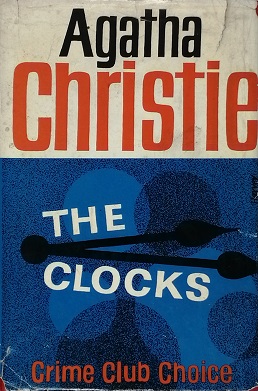My century of books is much healthier than it looks, and that’s cos I have been reading a whole heap of books I’ve not been writing about. And these eleven books aren’t gonna get a whole blog post out of me… so let’s see how we can fill some ACOB gaps.
The Art of I. Compton-Burnett (1972) ed. Charles Burkhart
Charles Burkhart was such an Ivy Compton-Burnett stan (samesies) and this is one of many books he wrote or edited about her – it includes various critical essays, appreciations, reviews, obituaries etc. Most valuably, it has two interviews that ICB gave – where she is at her most irrepressible. Such a glorious mix of disingenuous obtuseness and elaborate self-revelation. I love the collection for those – everything else is fun but inessential.
More Women Than Men (1933) by Ivy Compton-Burnett
Speaking of, I never mentioned that I re-read my favourite ICB novel earlier in the year. And it’s still marvellous and ingenious.
A Thousand Mornings (2012) by Mary Oliver
So many people have said they love Mary Oliver, so I thought I’d try a collection of her poetry. I’ve definitely enjoyed some of the works I’ve seen people post, particularly around the time she died, but this collection did leave me a bit cold. Maybe it’s deceptively simple and I need to reread a few times.
Much Dithering (1938) by Dorothy Lambert
I had really high hopes for this novel about quiet, young widow Jocelyn and the three men who might end up being her next husband (at least one of whom faces competition in Jocelyn’s vivacious, selfish mother). The plot is really fun and there are enjoyable details about village life, but I’m afraid I found the novel a bit bland overall. There was something in the writing that seemed to deaden the momentum for me. A pity.
Sunday (1962) by Kay Dick
This was even more of a disappointment. Kay Dick is now best known for They, reprinted to much fanfare (though I haven’t read it). Sunday is about a woman called Sunday from her daughter’s perspective, and the various men who were in love with her at different times – as well as their complex relationship. The final sections were quite good, told in the present – but most of the book is told in a ‘My mother always used to -‘ sort of way that makes it all feel very distant. There is no urgency to the novel and I found it extremely tedious. I’m assuming They is rather better.
How To Suppress Women’s Writing (1983) by Joanna Russ
Hopefully it’s obvious that this title is satirical! Russ traces the history of literary reception, and the way that women writers have been suppressed from writing, or from finding fame if they do write, or from a glowing reception if they were famous. It’s fascinating and saddening, and I hope some things have changed in the past 40 years – but I daresay not as much as you’d hope. (I found it interesting that most of the book’s argument is written out on the front cover.)
A Song for Summer (1997) by Eva Ibbotson
We had a lot of fun talking about The Morning Gift by Eva Ibbotson when Claire was a guest on the Tea or Books? podcast – and it definitely felt like retreading similar ground in this WW2-set novel. The heroine is very good and very spirited; the hero is diffident but noble and musical. It was entertaining enough as a novel, but clearly not her strongest. (I also listened to the audiobook, and the narrator’s choice of voice for the hero was distractingly weird and husky.)
Other Voices, Other Rooms (1948) by Truman Capote
Apparently very autobiographical, this is about a fey young boy trying to find his absent father – and meeting a fascinating and eccentric group of people in his search. I really enjoyed the writing with this one, though maybe it’s not one I should have listened to. One day I’ll probably reread as a physical book, and that would do the story justice.
At The Pines (1971) by Mollie Panter-Downes
Love Mollie P-D; felt quite ambivalent about this book. It’s about the home of Algernon Charles Swinburne (poet) and his life. It’s amazing how much he’s fallen out of favour – does anybody care about Swinburne now? I hoped this book was about Panter-Downes’ experiences and reflections, and it isn’t really. She writes well, but on a subject I had no interest in. I’d much rather she wrote about herself.
Woman on the Edge of Time (1976) by Marge Piercy
This is another where I’d misunderstood what the novel was actually about. The blurb says it’s a feminist classic about a woman who sees the future – so I thought maybe she’s see a few hours into the future, and perhaps use this skill to get beyond the bounds of misogynistic control. But she actually sees visions of 2137 and the people there, all the while sectioned in a run-down hospital. The novel opens extremely brutally, and it’s a pretty bleak book throughout. I guess it’s a sort of fantasy (it’s called science fiction, but I don’t see quite how) that doesn’t interest me very much.
The Bridesmaid (1989) by Ruth Rendell
My first Ruth Rendell and I was very impressed by her writing. It wasn’t really a murder mystery, which I had been expecting, and there wasn’t actually a bridesmaid (it’s, for some reason, the name of a statue). I don’t even want to give away what happens – except that it’s a story of how love can get out of control. Wikipedia tells me it’s a fan-favourite, and I can see why.









